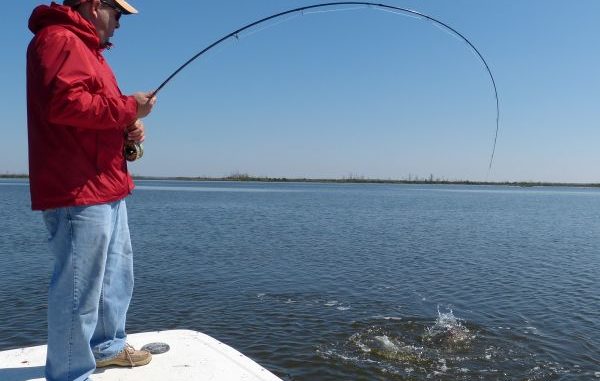
Don’t be a dummy, keep it simple
At a recent event, I was approached by a young man percolating with enthusiasm. He stated that he was looking forward to catching his first redfish with a fly rod.
So I asked when he was planning to head to the coast to fulfill his goal. He replied, “Oh, I’ve been down fly fishing several times but haven’t been successful.”
At this point, you could’ve knocked me over with a hackle feather. How can this be — that someone can be skunked multiple times in the Redfish Capital of the World?
Doctor Catch to the rescue! I took the young man aside and began to interrogate him in hopes of finding the cause of this “illness,” and offering a cure.
His first response was that he went looking for a book titled, “Fly Fishing for Redfish For Dummies.” I wasn’t aware there was any such book. Perhaps there should be.
Next, he went to an online forum and asked questions. When he mentioned the forum, my heart sank. Let’s just say it’s based in the Northeast — and I’m not talking Northeast Louisiana.
These folks know more about bluefish than redfish.
He went through his tackle: a (very) fast-action 8-weight fly rod, a floating shooting head, a 12-foot leader (along with a leader formulation that even had me baffled), and a set of Puglisi and Borski flies.
He also mentioned he was having difficulty with his casting, especially the double haul.
At this point, my brain was hurting.
Let me offer this observation: Sometimes I think we get too technical in our approach to fly fishing. We do a lot of complicated things when simple will suffice.
Let’s start with the rod. I read a lot of recommendations for fast-action rods for saltwater. If you’re making long casts — especially into a wind — there’s no question these rods have an advantage.
But for our marsh, accuracy is more important than distance. Roughly 90 percent of all the reds I catch are less than 40 feet from the boat or kayak.
Furthermore, for beginners timing and control are critical. Moderate- and moderate-fast-action rods allow them to enjoy casting success, catch fish and build confidence as they continue to advance casting skills. Skills that fast-action rods are suited for.
Another problem was that he bought the rod online without ever casting that model before
Please — please — always try before you buy. He could’ve test casted that same rod from one of several Louisiana retailers — and purchased it for exactly the same price as online.
Shooting heads are best suited for special distance-casting situations. Again, not necessary here.
The best fly line for our marsh is a saltwater-rated, floating, weight-forward fly line. By saltwater rated, I mean one that has a hard coating and either a multifilament or monofilament core.
If you’re a beginner, stick with a general saltwater taper. Such tapers offer the best combination of accuracy and shooting ability. Again, accuracy is key.
While on casting, let’s talk about the haul. It’s a very effective method for getting distance, or tossing big flies into a brisk frontal wind.
The haul is a casting technique where the caster forces the line to accelerate by giving it a tug on the backcast (single) and sometimes also on the forward cast (double). It requires that your basic casting skills are well-honed. In addition, it requires good timing — which means lots of practice.
There’s a way to do a single haul without any special technique.
Let’s say you’re a right-handed caster. When casting, hold your left arm by your side, and the left forearm and hand extended out from your body and slightly down. Keep the line in your left hand tight until the final forward cast. At which time, you release the line.
For some folks, this is how they execute a basic cast. And they’re able to shoot line every time.
The monofilament (or fluorocarbon) leader should also be simple.
The young man was using a 12-foot leader. If you’re casting bigger flies like he was (Borski patterns can be very wind resistant) then shortening to 8 feet will greatly improve your delivery of the fly. Or you can use smaller, less-wind-resistant flies like charlies.
Or do both. Which is what I recommended for him.
As for the leader formulation, it amazes me how complicated some folks make it. My friend Tom Jindra recommends a simple 60-20-20 formulation, where 60 percent is the heavier butt section, 20 percent midsection, 20 percent tippet (section tied to the fly).
This doesn’t have to be exact. For an 8-foot leader, this might be 4 feet of 30-pound mono, 2 feet of 20-pound mono and 2-feet of 14-pound mono.
What about a two-part leader, such as 5 feet of 24-pound mono and 3-feet of 14-pound mono? If you’re using flies sizes 2 and smaller, yeah — that’ll work, too.
My last bit of advice to the young man was to join a fly fishing or kayak fishing club. And not just to help with the technical aspects of either sport. Observing — or even fishing with — accomplished anglers can be a shortcut to success.


